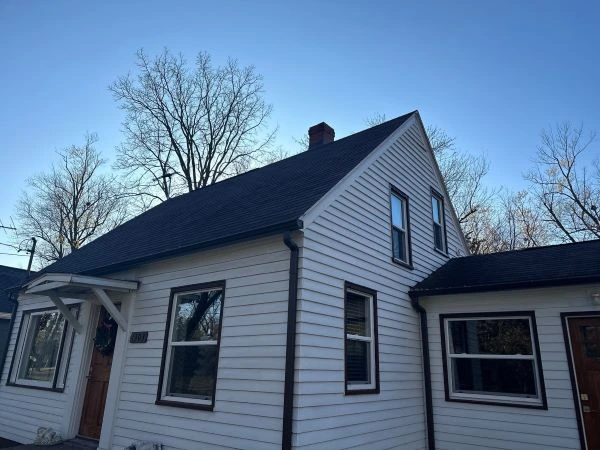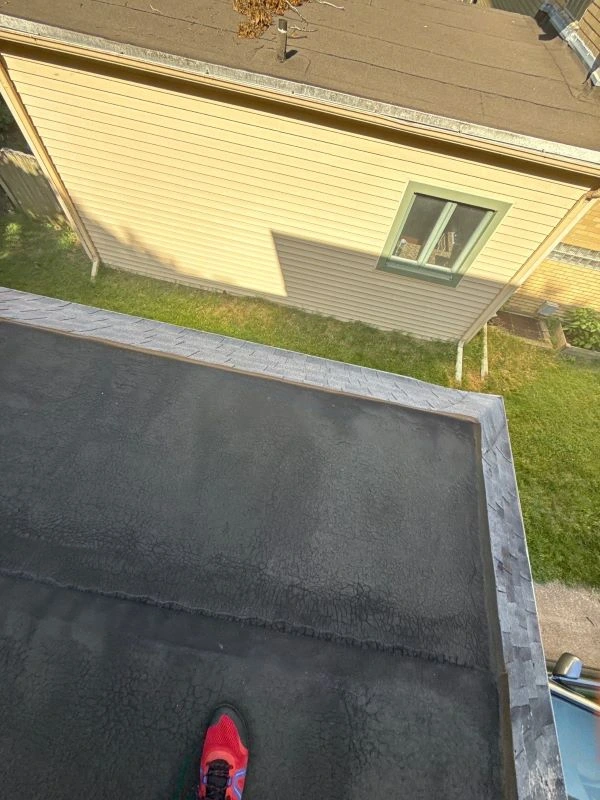Vinyl vs. Wood vs. Fiber Cement Siding: Which is Best for Your Home?
Choosing the right siding for your home is one of the most important decisions you can make to protect its exterior, increase curb appeal, and ensure long-term durability. The three most common options homeowners consider are Vinyl Siding, Wood Siding, and Fiber Cement Siding Panel. Each material has unique strengths, costs, maintenance requirements, and design possibilities. At Worthy Construction LLC, we specialize in siding installation and replacement, and we’ve seen how the right choice can transform a home’s look and performance.
In this comprehensive guide, we’ll compare vinyl, wood, and fiber cement siding in detail to help you make the best decision for your home.

The Importance of Choosing the Right Siding
Your siding does much more than enhance your home’s aesthetic—it shields your property against rain, wind, pests, and extreme temperatures. Proper siding reduces energy loss, prevents structural damage, and boosts resale value. With so many materials available, understanding the pros and cons of each helps you avoid costly mistakes and ensures your investment lasts.
Vinyl Siding: Affordable and Low-Maintenance
Vinyl siding is the most widely used siding option in the United States due to its affordability, variety of styles, and minimal maintenance needs.
Benefits of Vinyl Siding
- Cost-Effective: Vinyl is one of the most affordable siding materials, making it an excellent choice for homeowners on a budget.
- Low Maintenance: Unlike wood, vinyl doesn’t require painting, staining, or sealing. Occasional washing with a hose or power washer keeps it looking fresh.
- Durability: Vinyl is resistant to rot, insects, and water damage, making it suitable for all climates.
- Variety of Styles: Available in countless colors and textures, vinyl can mimic the look of wood without the upkeep.
Drawbacks of Vinyl Siding
- May crack or warp under extreme temperatures.
- Less impact-resistant compared to wood or fiber cement.
- Over time, colors can fade due to UV exposure.
Wood Siding: Classic Beauty and Timeless Appeal
Wood siding offers unmatched natural beauty, making it a favorite for homeowners seeking a traditional, elegant exterior. It can be installed in clapboard, shingles, or shakes, giving a home a warm and inviting look.
Benefits of Wood Siding
- Natural Aesthetic: Wood siding provides a classic charm that synthetic materials struggle to replicate.
- Customizable: It can be painted or stained in virtually any color, allowing for endless design possibilities.
- Sustainable Material: Wood is renewable and environmentally friendly when sourced responsibly.
- Longevity: With proper maintenance, wood siding can last decades.
Drawbacks of Wood Siding
- Requires regular maintenance, including painting, sealing, or staining every few years.
- Susceptible to rot, termites, and mold if not maintained properly.
- Higher cost compared to vinyl siding.
Fiber Cement Siding Panel: Strength and Versatility
Fiber cement siding panels combine cement, sand, and cellulose fibers into a durable, versatile product. It’s known for its ability to mimic the look of wood while offering superior strength and longevity.
Benefits of Fiber Cement Siding Panel
- Exceptional Durability: Resistant to fire, insects, moisture, and harsh weather conditions.
- Versatile Appearance: Can be manufactured to resemble wood, stucco, or masonry while retaining a modern finish.
- Low Maintenance: Requires less upkeep compared to wood, though it may need repainting over time.
- Long Lifespan: Properly installed fiber cement siding can last 30–50 years.
Drawbacks of Fiber Cement Siding Panel
- Higher initial cost than vinyl or wood.
- Heavier material requiring professional installation.
- May need occasional repainting depending on the climate.
Cost Comparison of Siding Materials
- Vinyl Siding: Most affordable option, ranging from $3–$6 per square foot installed.
- Wood Siding: Mid-range to high, averaging $6–$12 per square foot depending on the type of wood.
- Fiber Cement Siding Panel: Premium option, costing $8–$14 per square foot installed.
While vinyl siding saves money upfront, fiber cement offers the best long-term value due to its lifespan and durability.
Signs It’s Time for New Siding
No matter which material you choose, siding eventually wears out. Here are the warning signs that it’s time to replace your siding:
- Cracks, Warping, or Rot: Visible damage reduces your siding’s protective capabilities.
- Peeling Paint or Faded Colors: Indicates exposure to moisture and UV damage.
- Higher Energy Bills: Poor insulation or damaged siding allows air leaks.
- Mold or Mildew Growth: Suggests moisture is trapped behind siding.
- Interior Wall Damage: Bubbling paint or peeling wallpaper inside your home may stem from exterior siding failure.
DIY Siding Maintenance Tips
Homeowners can extend the life of their siding with regular upkeep:
- Wash Annually: Use a hose or pressure washer to remove dirt, mold, and mildew.
- Inspect After Storms: Look for cracks, dents, or loosened panels caused by wind or debris.
- Repaint or Re-stain Wood: Protects wood siding against moisture and pests.
- Seal Gaps: Prevent insects and moisture from getting behind siding by caulking around windows and doors.
- Trim Vegetation: Keep bushes and trees away from siding to prevent scratches and moisture buildup.
Which Siding is Best for Your Home?
- Choose Vinyl Siding if you want an affordable, low-maintenance option with a wide variety of colors and styles.
- Choose Wood Siding if you prefer natural beauty and are committed to ongoing maintenance.
- Choose Fiber Cement Siding Panel if you want the best combination of durability, appearance, and longevity, even if it requires a higher initial investment.
At Worthy Construction LLC, we provide expert siding installation and guidance to ensure you select the best option for your home’s needs, climate, and budget.
FAQs About Vinyl, Wood, and Fiber Cement Siding
1. How long does vinyl siding last?
Vinyl siding can last between 20 to 40 years depending on quality and climate conditions. Regular cleaning and inspections help extend its lifespan while keeping your home looking attractive.
2. Is wood siding worth the maintenance effort?
Yes, if you value natural beauty and timeless style. With consistent care such as painting, staining, and sealing, wood siding can last decades and significantly increase curb appeal.
3. Why is fiber cement siding considered premium?
Fiber cement siding panels are engineered for extreme durability, fire resistance, and design versatility. Although more expensive upfront, their longevity and low maintenance requirements make them a long-term investment.
4. Can I install siding myself?
While DIY siding installation is possible, professional installation ensures proper sealing, alignment, and durability. Fiber cement siding, in particular, is heavy and requires specialized tools for safe installation.
5. How do I choose the best siding for my climate?
Vinyl performs well in most climates but may warp under extreme heat. Wood works best in drier regions but requires maintenance in humid areas. Fiber cement siding is ideal for regions with fluctuating temperatures and harsh weather conditions.
Conclusion
Whether you choose Vinyl Siding, Wood Siding, or Fiber Cement Siding Panel, the right siding enhances your home’s beauty, protects its structure, and increases long-term value. Each material offers unique benefits, and the best choice depends on your budget, aesthetic preferences, and willingness to maintain it. At Worthy Construction LLC, we provide professional siding installation services tailored to your needs, ensuring lasting results and peace of mind.






Trustindex verifies that the original source of the review is Google. Worthy Construction just replaced my roof, skylights, and gutters. I live out of town and selling my parent's house so this company came through a personal referral. Khari and team were such a joy to work with. He answered my questions, kept me updated on progress, did everything he said he was going to do, and met all of commitments on time. It's not easy to know what's happening while living out of town and I appreciate Khari's communication skills, timeliness, and overall this has been an amazing experience! I highly recommend Worth Construction!!Trustindex verifies that the original source of the review is Google. Worthy Construction did an excellent job replacing our roof. They were very easy to work with throughout the entire process. They answered all of our questions promptly and delivered a great finished product. I’d highly recommend them for your roofing needs.Trustindex verifies that the original source of the review is Google. Very professional, great guy that will work with you. Highly recommended for sure. Mr. Worthy is very dependable! He completed our roof on time and as expected!Trustindex verifies that the original source of the review is Google. Greatest service ever! Super fast and did a fantastic job. I will definitely save them to do future jobs that need to be fixed. The greatest ever!Trustindex verifies that the original source of the review is Google. My roof was very damaged, I had a huge hole in my roof from constant tree debris and age. I didn’t have any expectations going in to the project but I was greatly impressed with the speed of service! The ten we done in 2 days! They cleaned up afterwards, the materials were great quality and . The team replaced my entire rooftop. Mr. Worthy was very respectful and responsive to my concerns regarding the project, I would certainly recommend his company to anyone looking for a new rooftop!Trustindex verifies that the original source of the review is Google. He was a pleasure to work with. They were prompt and professional the whole project. He kept me informed the whole process and his work was of the highest quality. They were very respectful of my and my neighbor's properties. I am very very happy with the work they did for me.Trustindex verifies that the original source of the review is Google. Quality work! Highly recommended!Trustindex verifies that the original source of the review is Google. I didn't have much word done, but I called after noticing a leak in my ceiling after a storm. Khari answered right away and was able to come and take a look within a couple days. He found the problem and was able to fix if with just caulking for no charge, 100% recommendTrustindex verifies that the original source of the review is Google. We had our roof and some gutters done by Worthy Construction and not only was it very timely, but they also were very friendly. We had the unfortunate experience of having to replace roof sooner than expected and they came and explained everything to us and then gave us options that really worked for us. Khari and his team did a wonderful job for us and I would recommend their service again and again. When they were working on our roof they noticed a leak in one of our gutters and replaced that as well which was very helpful!Trustindex verifies that the original source of the review is Google. I needed a roof replacement, Mr. Worthy worked with me and my insurance company from start to completion. He gave me a time frame and he stuck with it. High praise for him and his professional team.




